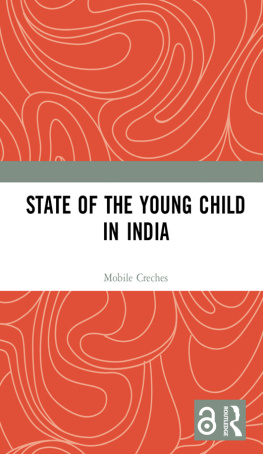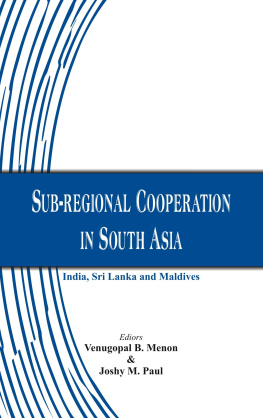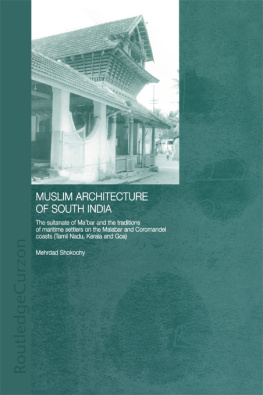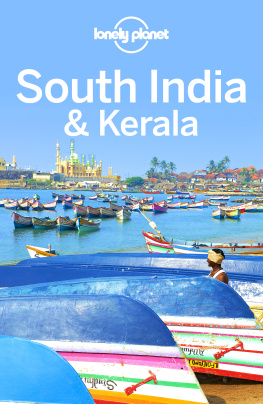To Madras,
beloved and demanding home
Introduction
South India: A Different Country
Consider a child born in India.
This child is, firstly, far less likely to be born in south India than in north India, given the formers lower rates of population growth. But lets assume the child is born in the south. She is far less likely to die in the first year of her life given the lower infant mortality rates in south India compared to the rest of India. She is more likely to get vaccinated against diseases than the average Indian newborn, less likely to lose her mother during childbirth, more likely to get childcare services and receive better nutrition.
She is more likely to celebrate her fifth birthday, more likely to find a hospital or a doctor in case she falls sick, and more likely to eventually live a slightly longer life. She will also go to school and stay in school longer; she will more likely go to college than her contemporaries elsewhere in India. She is less likely to be involved in agriculture for economic sustenance and more likely to find work that pays her more.
She will also go on to be a mother to fewer children than her peers in the rest of India, and her children in turn will be healthier and more educated than she. And shell have greater political representation and more impact on elections as a voter than those peers too. In short, the median child born in south India will live a healthier, wealthier, more secure and more socially impactful life than a child born in north India.
Indias regional imbalance wasnt always skewed in favour of the south and it was never as substantial as it now is. At the time of Independence, the southern states were indistinguishable from the rest of India in terms of their development metrics. Today, the difference in development between some of the northern states and southern states is as stark as that between sub-Saharan Africa and the Organisation for Economic Co-operation and Development (OECD) countries.
Why is the south doing so much better than the north? Surely, its not historical providence or ethnic essentialism, given their similar starting points. Its obviously not due to some policy implementation of the Government of India. That leaves policy decisions at the state level, the implementation capacity of their bureaucracies and dumb luck as other possible reasons. The capabilities of state bureaucracies are often realizations of policy decisions themselves. And luck, over a long enough period of time, is otherwise called policy vision and implementation.
So, why were states in southern India able to design better policy and implement it too? The literature credits subnationalism as one reason for the relatively better development of states in southern India. In India, instances of subnationalism are often based on linguistic identity, given that they go back millennia. That sense of belonging in a localized geography is the glue which creates the knock-on effects that accelerate growth in various spheres, simply because we as a social species achieve great things when we have a common purpose.
Uttar Pradesh is often propped up as a counter-example to states with high levels of subnationalism. Theres no sub-nationalism in that state. Even the name, Uttar Pradesh, is generic and was decided as an afterthought. It retains the colonial, short-version UP for United Provinces and gives it a Hindustani twist. Unlike Tamil Nadu and Kerala, where linguistic identities transcended other subgroup identities, in Uttar Pradesh, loyalties to Hindi and Urdu served as proxies for religion. This continues to the present day in that state, where government programmes are often seen through the lens of caste groups or religious communities.
Compared to, say, Kerala, the trajectory of decay in public services in Uttar Pradesh, and its consequent status as a laggard state, runs in the opposite direction. The United Provinces under British rule was a relatively well-administered province while the princely state of Travancore, which is now part of Kerala, was a troubled place.
The economic trajectory of Indias states follows the simple maxim of the modern era: the most important economic resource a country has is its people. A healthy and well-educated population with a reasonably well-run government is likely to have better economic prospects. The income levels and job prospects in south India, unsurprisingly, are significantly better than in the north.
Burden of Success
This success of the southern states, though, is under increasing pressure. The Indian Union, buoyed by the politics of nationalism, has sought to centralize policymaking. The declining significance of the southern states in national politics has coincided with the rise in prosperity in those regions. South Indias concerns, to start with, are often orthogonal to those of north India, given the different stages of development they are in. South India also forms a demographically smaller section of the country.
The rise of nationalism as the dominant political ideology in northern India does not look at diversity in polity and policymaking as desirable. The demographic divergence between the north and south, which was already skewed in favour of the more populated north, has been made worse by a further skew in population growth that favours the north. All this makes south India a junior partner in the zero-sum game called electoral politics, diminishing its influence in decision-making.
The centralizing urge has been a feature of the Indian Union since its inception. In the twenty-first century, though, that complicated reality of Indias democratic structure has assumed a cultural and political stranglehold over the country. Resource allocation by the Indian Union whether of finances or other kinds of resources that the Union collects from and shares back with the states heavily favours the north and works against the south. The south is taxed more, both in absolute terms and on a per capita basis, but receives far less allocation in return, simply because its population growth is lower.
The centralized collection and resource reallocation, especially of tax revenue, has meant states now have even less ability to either innovate in policy, or finance those innovations, than in the past. The Union, again because of how electoral politics works, has been designing policy for the northern and central plains of India and forcing that on the southern states. For example, a goal for the education sector, according to the National Education Policy (NEP) of 2020, is to reach 50 per cent enrolment in tertiary education by 2035. Some states in southern India have already exceeded that goal. Designing a policy whose fifteen-year goal has already been achieved is another way of condemning the south to status quo while waiting for the north to catch up.
There is a demographic detonation timed to go off in 2026, which will lead to another big fork in the future allocation of political power and associated resources between the north and south. Electoral delimitation the periodic allocation and reallocation of seats on the basis of changes in population based on the census was frozen in 1976, and that freeze is set to expire in 2026, when delimitation will be taken up again.
This process, which reapportions seats in Parliament based on population, decides how much of a say each state will have in the running of the country. South India is set to lose political representation it already has a smaller representation in Parliament than the north as a reward for its effective population control. This comes exactly at a time when it needs more voices to highlight and fight the increased centralization in policymaking. This will effectively mean punishing policy success all over again.










